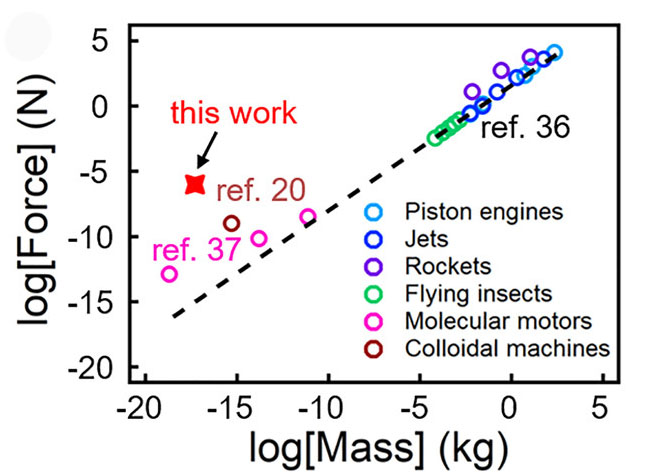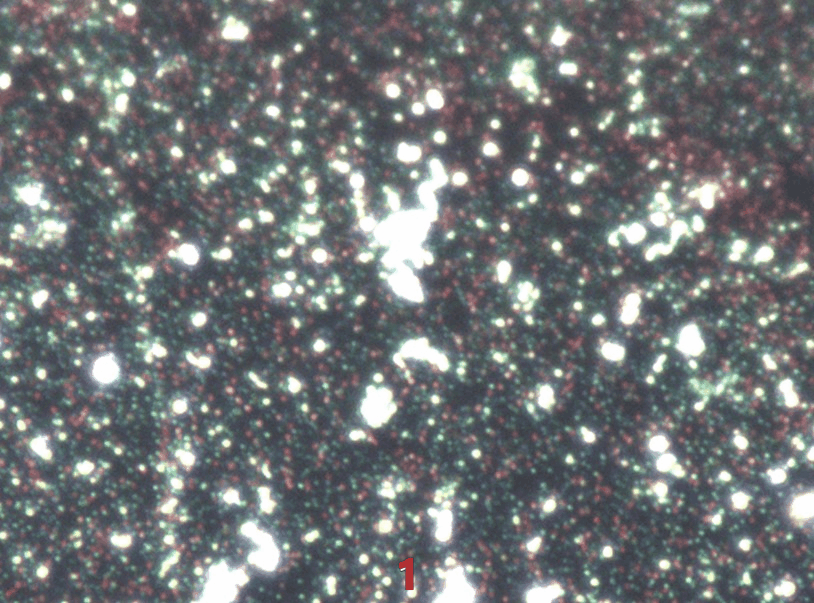| Aug 08, 2022 | |
Plasmonic nano-dynamite as power source for nanomachines |
|
| (Nanowerk Spotlight) The trillions of tiny molecular nanomachines that are at work inside our bodies and are keeping us alive perform such tasks as building and breaking down molecules, moving materials around a cell, and processing and expressing genetic information – and they do this while consuming remarkably little energy. | |
| Researchers working on creating nanomachines such as actuators, rotors and motors have a very long way to go before they come even close to Nature's highly efficient little machinery. | |
| One convenient way to manipulate nanoscale objects with remote controllability is actuation and propulsion by light, which is largely based on optical and photothermal-induced forces. Light has an inherent power to move microscopic objects – a property previously used to develop the Nobel prize winning research idea of ‘optical tweezers’, which use a highly focused laser beam to control and maneuver tiny particles with incredible precision (read more: "Microscopic metavehicles powered by nothing but light"). | |
| Unfortunately, the output of optical and photothermal-induced forces is small (in the piconewton range) and speed is slow, which strongly restrict their performances to liquid environments or semi-liquid interface. | |
| "Although laser-induced metal jetting and ablation can be used for forward transfer of nanoparticles in an efficient and controllable manner in dry state, in-plane manipulation and generality of this technique are still limited," Prof. Tao Ding, who leads the Photonic Materials and Technology group in the School of Physics and Technology at Wuhan University, tells Nanowerk. "Moreover, sophisticated positioning and high-energy pulsed femtosecond laser are required, which adds to the cost of the operation." | |
| Ding and his team are on a quest to develop a robust nanoengine system that is capable of powering the motion of any nano-object (and micro-object), even in a dry state. | |
| They have now reported in ACS Nano ("Optically Triggered Nanoscale Plasmonic Dynamite") a novel and intriguing nanoactuation system: plasmonic nanodynamite. This system can be optically triggered to eject gold nanobullets with an initial speed of up to 300 m/s with forces of ∼1 µN and thermomechanic energy efficiency of ∼30%. | |
| The way this system works is to encapsulate a gold nanoparticle (Au NP) with a fullerene (C60) shell and then use a continuous wave laser to remotely trigger this Au@C60 core−shell nanoparticle to forcefully eject the Au NP to a distance from hundreds of nanometers to micrometers. | |
| "The ejection mechanism is caused by the strong local heating source as well as electric field enhancement of the gold core under laser irradiation, which boosts the photochemical oxidation of C60 into CO2," Ding explains. "Such an abrupt accumulation of gas and heat builds strong local pressure (∼1 µN local force on the Au NP), which ejects the Au NP out of the C60 encapsulation. This ejection process happens extremely fast (∼200 µs)." | |
| Compared to previously designed nanomachines, this is a huge advancement in terms of force output, energy efficiency, response speed (see image below). | |
 |
|
| Au NP ejection and dynamics. Summary of force output per mass in existing machinery systems from macro to nano. (Reference numbers relate to the references listed in the paper) (Reprinted with permission by American Chemical Society) | |
| Fullerenes have been known for decades and most of the research on them has focused on optoelectronic, photovoltaic, and biomedical applications. What's new is that they also can be used as a carbon fuel source to quickly accelerate nanobullets. | |
| The researchers point out that, theoretically, any carbon allotrope can do the same work, but it is just easier to get C60 coated around the gold nanoparticles to form the core-shell composites used in this work. | |
| At the outset of the project, the team was focused on the plasmon-exciton interaction of the Au@C60 system and on trying to understand how charge transfer happens in this system. | |
| "We accidentally noted the phenomenon that when we shone lasers on the particles, the particles were just gone: every time when the laser power was high, the particles got blasted away," Ding recounts. "I said to my master student Xujie – the first author of this paper – 'Hey, maybe we can do something interesting with this ablation'. And finally we arrived where we are now." | |
| The researchers realized that their accidental discovery could provide a robust power source (they termed it 'nanodynamite') for nanomachines by making use of the ejection of the gold nanoparticle core from the fullerene shell in order to power the movement of a micron-sized silica bead via momentum transfer. | |
| In their paper, they demonstrate the use of nanodynamite to mobilize and manipulate microparticles on dry, solid surfaces with light – an unprecedented feat so far. | |
 |
|
| Moving a SiO2 microbead with nanodynamite: the channels of an anodic aluminum oxide template are loaded with Au@C60. By exploding a Au@C60 with 641 nm laser irradiation, a micrometer-sized SiO2 bead placed on top can be mobilized to any location via multiple laser shots with controlled directionality. (Courtesy of the researchers) | |
| "We believe that our nanodynamite system can also be installed in other nano-/micro-mechanical devices such as nanoactuators, nanolevers, nanopistons etc. and power their movement with a laser trigger," Ding notes. | |
| Having demonstrated their system to do mechanical work, the team is now exploring other avenues as well. For instance, they consider punching nanoholes or induce a local strain in 2D materials with the ejection of Au cores, and then look at the resulting effect on the electronic bandgap properties and exciton emission behavior. | |
| Currently, the control of the gold nanoparticles' ejection length and direction is not 100% accurate but already enough as the power source for actual nanomechanical systems. The major problem however that requires sophisticated design and engineering is the task of reloading or recharging the Au@C60 nano-dynamite during their operation. | |
 By
Michael
Berger
– Michael is author of three books by the Royal Society of Chemistry:
Nano-Society: Pushing the Boundaries of Technology,
Nanotechnology: The Future is Tiny, and
Nanoengineering: The Skills and Tools Making Technology Invisible
Copyright ©
Nanowerk LLC
By
Michael
Berger
– Michael is author of three books by the Royal Society of Chemistry:
Nano-Society: Pushing the Boundaries of Technology,
Nanotechnology: The Future is Tiny, and
Nanoengineering: The Skills and Tools Making Technology Invisible
Copyright ©
Nanowerk LLC
|
|
|
Become a Spotlight guest author! Join our large and growing group of guest contributors. Have you just published a scientific paper or have other exciting developments to share with the nanotechnology community? Here is how to publish on nanowerk.com. |
|
